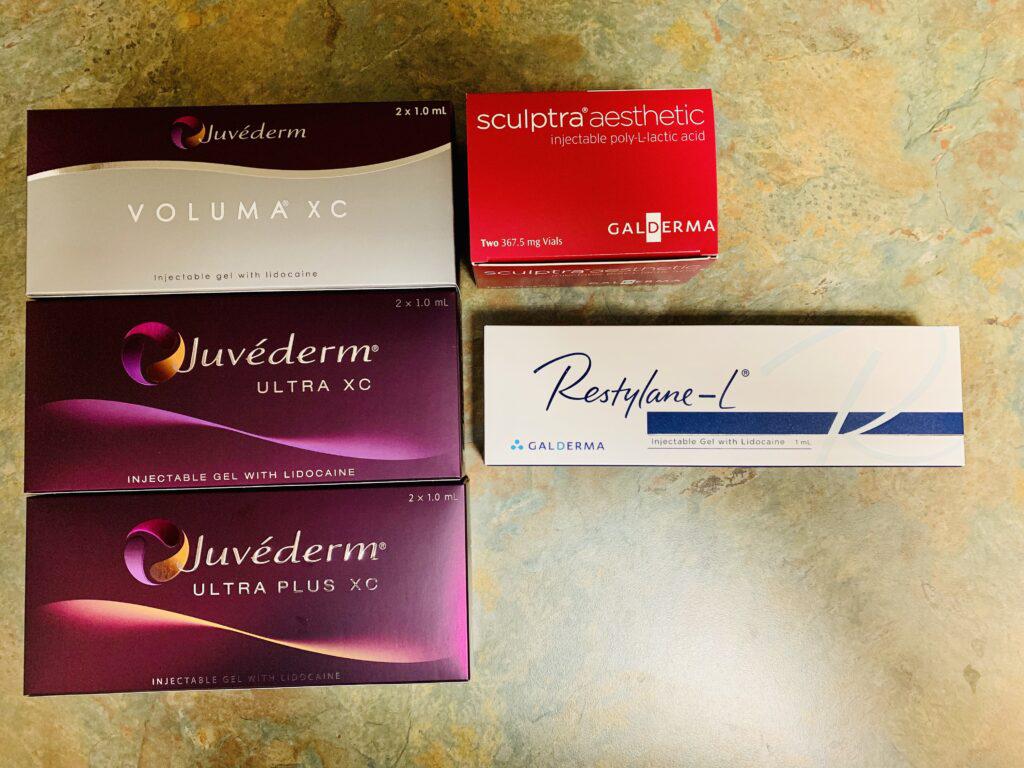 Fillers represent one of the most requested minimally invasive treatment options to re-volumize the aging face. The first filler available in 1981 was bovine collagen but its short duration and potential for allergic reactions limited its widespread usage. The introduction of HA (hyaluronic acid) products in 2003 revolutionized the world of fillers. In fact, the first HA filler available was Restylane, which is still often used today. Juvederm products did not become available until 2006 and the first available of this family were Juvederm Ultra and Ultra Plus. Since those days, the filler world has seen immense growth. Today, the FDA has approved various types of HAs, biostimulatory (collagen-building) products such as Radiesse (calcium hydroxylapatite), and Sculptra (poly-L-lactic acid), as well as a permanent filler Bellafill (Polymethyl methyacrylate)
Fillers represent one of the most requested minimally invasive treatment options to re-volumize the aging face. The first filler available in 1981 was bovine collagen but its short duration and potential for allergic reactions limited its widespread usage. The introduction of HA (hyaluronic acid) products in 2003 revolutionized the world of fillers. In fact, the first HA filler available was Restylane, which is still often used today. Juvederm products did not become available until 2006 and the first available of this family were Juvederm Ultra and Ultra Plus. Since those days, the filler world has seen immense growth. Today, the FDA has approved various types of HAs, biostimulatory (collagen-building) products such as Radiesse (calcium hydroxylapatite), and Sculptra (poly-L-lactic acid), as well as a permanent filler Bellafill (Polymethyl methyacrylate)
Choosing the right filler for the right area is sometimes compared to painting, in which an artist has to pick the right paint and paintbrush to achieve what he or she desires. There is often more than one right filler choice and this is driven by your injector’s personal experience, training, product availability and multiple other factors. Fillers should be viewed as true medical procedures, and though largely safe, side effects and complications can and do happen. I urge you to be educated regarding what is being injected into your body and hope that this blog post serves as a foundation towards that end. Please do not hesitate to contact me either through this website or through social media with any further questions I may be able to answer.

